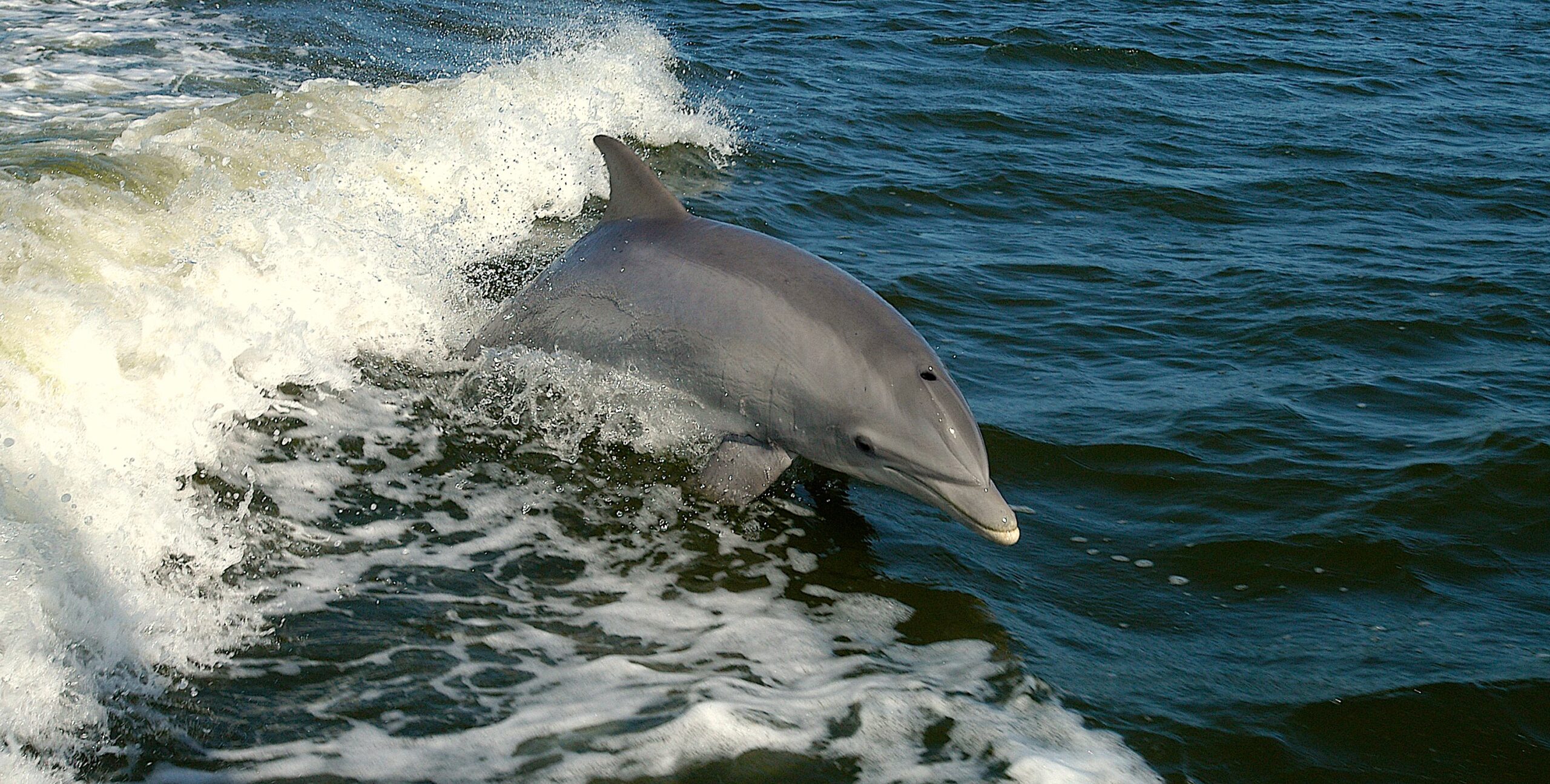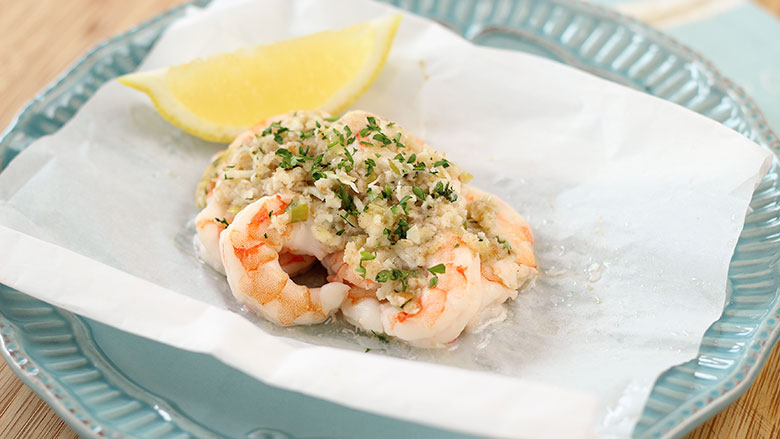Susan Barco is a senior scientist at the Virginia Aquarium & Marine Science Center and part of the aquarium’s team that responds to marine mammal strandings. Barco’s crew is the only one in Virginia equipped to deal with such events. For the bottlenose dolphin species alone, the team has arrived to the scene of almost a thousand strandings over the last decade.
Now Barco is at the frontline of preventing some dolphin injuries from happening in the first place. Bottlenose dolphins near Virginia Beach must co-exist with commercial fishers. Yet some stranded dolphins are being found with tangles and scars from pound nets, a crucial fishing gear in the region.
But with the help of local fishermen, NOAA Fisheries and North Carolina Sea Grant — and the unwitting help of some sea turtles — Barco and colleagues from the Virginia Aquarium Stranding Response Program (VAQS) are hedging a bet on an idea to solve this dilemma.
A Pressured Population
Between 1997 and 2008, 70 of the 964 bottlenose dolphin strandings VAQS documented in Virginia occurred in the lower Chesapeake Bay, off the Cape Henry area just east of the Chesapeake Bay Bridge Tunnel in Virginia Beach.
Some are due to natural causes or birth complications; others have been found with parasites and diseases, potentially due to pollution-weakened immune systems. Other strandings are a result of fishing gear interactions. “They can get tangled in monofilament line, crab pot buoys, or they ingest fishing gear, like hooks or lures,” Barco explains.
But many of the hurt or dead bottlenose dolphins found there had markings consistent with entanglements with a particular type of fishing gear — the pound net.
Stacey Horstman, a bottlenose dolphin conservation coordinator for NOAA Fisheries, explains that the Virginia pound net fishery is a concern because the particular marine mammals visiting Cape Henry area — the Northern North Carolina Estuarine Stock (NNCES) of bottlenose dolphins — are a small, unique population.
The NNCES bottlenose group has maybe only 1,000 animals, “compared to 7,000 to 9,000 individuals in the migratory stocks off the coast,” Horstman says. “And this particular small stock has many potential pressures.”
Though the NNCES dolphins rarely encounter pound nets in North Carolina waters, they do migrate into Virginia waters areas such as the Cape Henry area, where entanglements are more frequent.
“We know the NNCES dolphins are moving into the Cape Henry area,” says Horstman, who coordinates the Bottlenose Dolphin Take Reduction Team (BDTRT). The team is comprised of commercial fishers, researchers, and representatives from state and federal agencies, fishery management councils and non-governmental organizations. The BDTRT is tasked with providing NOAA Fisheries with recommendations to help reduce interactions between bottlenose dolphins and commercial fishing gear along the Atlantic coast of the United States.
Because small stocks such as the NNCES bottlenose are more susceptible to population decline, the BDTRT carefully examines commercial fishery interactions that could harm individual animals. So, the BDTRT is interested in examining any fishing gear modifications that could help keep the population safe — such as Barco’s idea.
Net Impact
Pound nets are stationary commercial fishing gear. The net begins with a length of netting called the “leader,” which stretches out perpendicular from the shoreline. The mesh leader is suspended between a row of pilings permanently sunk into the seabed. A weighted chain along the bottom of the net hugs the leader to the bay floor while the net’s top is held up by the pilings. The leader does not actively capture fish. Instead, it spans the depth of the water column, diverting fish away from shore and into the trap — or pound — located offshore.
“Fish react instinctively to a barrier in their path,” explains Lewis Gillingham, a BDTRT member with 20-plus years of experience in fisheries management with the Virginia Marine Resources Commission. Gillingham now directs state saltwater angling tournaments and works with gamefish tagging programs.
“If something is blocking their way, [the fish’s] reaction is to swim to deeper water. So when they encounter the leader, they follow the net offshore where the pound part of the net is waiting to catch them,” Gillingham says.
Bottlenose dolphins use this instinct to their advantage when hunting fish in the Chesapeake Bay, he notes. “They know where this gear is and regularly use the pound net leaders to herd and capture fish.”
Dolphins stranded in pound nets often are found in the leader of the net.
“There’s the rare event that they make a mistake and stick their nose through the mesh. And though they’re smart, they’re not smart enough to know they have to back up to get out of that net. They roll and they get stuck,” Gillingham explains.
When they do get out, the dolphins are left with telltale scars and markings.
Barco says that marks and injuries from net interactions are seen on the “sticky-outie parts” of dolphins, such as the snout, fins and flippers. The shape of the markings, as well as the location of the injury, provide clues as to what type of fishing gear the dolphin has run up against. To the trained eye, it is easy to identify injuries that are a result of pound net interactions, as opposed to other gear types.
“Pound nets are made of heavy nylon twisted twine. It leaves a different mark than most other nets and lines,” Barco explains.
Because the leader does not actively catch fish, Barco and her colleagues wondered if there was a way to make the leader of the net safer for the bottlenose dolphins while maintaining the harvest and economic value of the finfish catch for fishers. Here is where the sea turtles come in.
Barco recalled a previous NOAA Fisheries-funded study where researchers reconfigured the leader of pound nets in an effort to reduce sea turtle bycatch along Virginia’s Eastern Shore side of the Chesapeake Bay. Instead of traditional top-to-bottom mesh leaders, researchers replaced the top two-thirds of the mesh panel with vertical polypropylene rope spaced about two feet apart.
The vertical lines are referred to as a “string hedge.” The spacing of the string hedge is wide enough to keep turtles from being tangled up, but narrow enough to keep schools of fish fooled and diverted into the pound net.
Following two years of testing, the string-hedge design appeared to significantly reduce sea turtle interaction with the nets while maintaining the commercial fishery catch. NOAA Fisheries was so pleased with the results of the study that the agency issued a ruling banning the use of mesh leaders between May and July on the eastern side of the lower bay.
Barco felt confident this same design would help dolphins too, but knew she would have a difficult time convincing commercial fishermen to change out their nets without evidence that the new design would not affect their catch.
Hedging a Bet
Barco and her colleagues secured funding from the NOAA/NMFS regional Marine Mammal Bycatch Reduction Program. “We supported her project because dolphin are migratory species,” says Steve Rebach, North Carolina Sea Grant’s associate director. The bycatch program is one of several NOAA regional marine mammal programs administered by North Carolina Sea Grant since 2004.
“The results of her study could have far-reaching effects beyond the Chesapeake Bay,” Rebach adds.
To test the experimental nets, Barco approached Dimitri Hionis, owner of the Lynnhaven Fishing Company that employs several fishermen in the Cape Henry area of the bay. Hionis was apprehensive at first, Barco says.
“He was concerned about the dolphins, but relies on the pound nets for his economic livelihood,” she says. “He was interested in working with us, but wanted to be sure that he wasn’t going to lose a bunch of money trying my idea out.” Barco worked with Hionis, who was unavailable for comment, to design a project that ensured he and the researchers would be happy with the plan. He agreed to test the string-hedge leader on one of his fishermen’s nets. Two other nets used the traditional leader, which served as “control” nets for comparison purposes.
Copying the design used in the sea turtle project, the experimental leader used standard mesh netting on the bottom one-third of the leader and stiff vertical lines spaced about two feet (0.6 meters) apart for the top.
“We thought the dolphins would be able to avoid becoming trapped in the vertical lines,” Barco explains, noting that this kind of design makes it easier for dolphins to maneuver around nets.
When it came time to analyze the data, researchers sorted the catch of all three nets by economic value of the harvested finfish species. The contents of each net were sorted into three categories: commercial species, baitfish, and returns — species that have no commercial value or are undersized.
The result? The experimental leader design was a success.
“We found fewer of the less desirable species such as skates and rays,” Barco says. “This saves the fisherman money as he doesn’t have to spend as much time culling those species out of the catch.”
In addition, catches of economically valuable species, such as Spanish mackerel, were slightly higher in the net using the experimental leader.
Revealing the Results
Barco presented the results of her research at the 2009 meeting of the BDTRT, where the take reduction team passed a consensus recommendation to NOAA Fisheries: the experimental leader should be used year-round in the lower Chesapeake Bay.
“We believe the leader would benefit dolphin conservation in the lower bay,” Horstman says. “Changing this regulation would be consistent with the regulations in place for sea turtles in the lower bay,” Barco adds.
Pound netters on the eastern side of the bay already use the stringer design between May and July, when mesh leaders are banned, to reduce sea turtle entanglements in their nets. “Though further monitoring is needed, we feel confident this design will reduce dolphin interactions as well,” Horstman says.
Kenny Heath, a pound netter who was involved in the initial sea turtle study, supports the proposal to extend the use of the experimental leader. Heath has been using the design for five years and is happy with the way it works.
“It allows me to keep fishing,” Heath says.
Heath and other commercial fishermen know that the alternative they face is closure of the commercial fishery in order to protect endangered and protected species, such as sea turtles and dolphins. But to help fishermen adopt any new gear and regulations, researchers need to demonstrate that the experimental gear is going to maintain — or even improve — their economic return, says Barco. The experimental net Barco made cost close to $10,000.
Another concern is changes in the type of catch due to the string-hedge gear. “Pound net catches are highly variable from year to year and from one location to another and even day to day at the same net,” Gillingham says. “While results were favorable on these lower bay western shore nets, you can’t be certain the same will hold true in the upper bay with its different assemblages of fish.”
Heath says he has not noticed a change in his commercial catch since using the string-hedge pound net, but adds that such comparisons are hard to make. “The catch varies day to day, from one set to the next,” Heath explains. “But I think they should try it.”
Further study is needed to evaluate commercial catch over the long term. Evaluating the success of the string-hedge design over time may also influence other states to consider altering their pound net regulations as well.
“Other fishermen, not only in Virginia but also throughout the Atlantic coastal region, may try the string-hedge leader and could consider adopting it full time,” Steve Rebach says. “That could help to reduce dolphin mortality while sustaining viable fisheries.”
This article was published in the Holiday 2009 issue of Coastwatch.
For contact information and reprint requests, visit ncseagrant.ncsu.edu/coastwatch/contact/.
- Categories:



